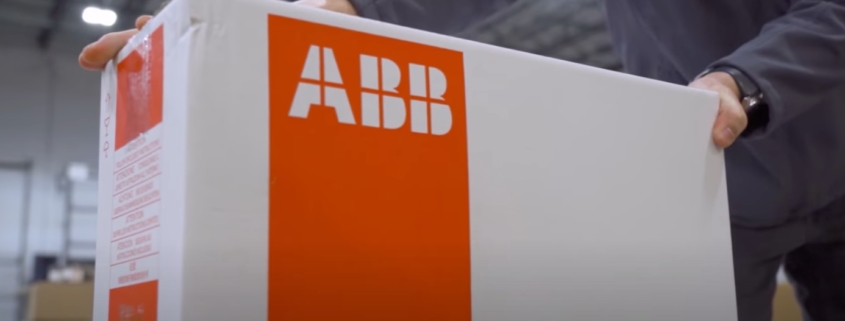3 ways to help make your control panels more competitive
When selecting panel components, OEMs can boost their competitive position by looking beyond price at three other factors that can elevate the quality, reliability, functionality, and price-competitiveness of your panels.
For real estate buyers, it’s location, location, location. For electrical control panel component buyers, it’s often price, price, price. For OEM panel builders, the simple truth is that having the lowest price is commonly what it takes to make the sale.
While that’s perceived to be true for some panels, for end users or applications with more complex or sophisticated requirements, component cost is only one – and probably not the most important – consideration. Focusing on technology, expertise, and logistics when selecting components in these situations, instead of prioritizing cost, could make your equipment more competitive.
There are three key factors related to components and component suppliers that you should consider if you want to differentiate your equipment from the competition and earn more sales.
Technology
When was the last time you took a fresh look at alternatives to the components you’ve been using in your panels? If it’s been a while, you may be missing out on opportunities to improve productivity, reliability, and efficiency, while adding new features and functions, and possibly do so while reducing panel costs.
Today’s power-safety and control devices are more capable than ever. You can buy breakers, for example, that integrate a number of functions traditionally performed by separate, additional components. Protective relays, communication capabilities, and PLC logic and metering, for example, are available as integrated functions within some breakers.
Multi-function breakers also simplify panel design and reduce panel size. There’s a reliability boost due to less wiring and fewer terminations. There’s also the added savings from shortening the bill of material by sourcing one breaker instead of multiple components. Even with all these added benefits, the purchase price of that more expensive breaker is often less than the cost of the components it replaces.
Your technology partner can also help you meet unspoken customer requirements. When a customer tells you they need a different function or capacity in a component, the component maker can help you dig deeper to uncover the true pain point. They can help you discover what the customer is actually trying to accomplish, and then provide a solution that most effectively meets their requirements.
Experience and expertise
When you’re working on a new design, or trying to solve a unique or challenging customer requirement, you will likely need some help finding the optimum solution. In those cases, you want to be working with a supplier that has high levels of both experience and expertise.
Those more capable suppliers have probably seen a problem like what you’re facing, and can quickly recommend a solution. Even if it’s a new problem to the component supplier, they are likely to be eager to try to find a solution so they can add it to their knowledgebase.
This expertise typically comes at no charge to the panel builder. Design support is part of the package you get when relying on higher-quality component suppliers.
Logistics
Consumer buying expectations are bleeding over into business buying. Many of the millions of people who shop on Amazon each day begin filtering their options by checking the Prime box, giving them two-day, no- cost delivery. Panel-component buyers don’t have quite such high expectations, but they are more impatient than ever, and want to have a high level of confidence that they will quickly be able to get urgently needed components.
No distributor can promise to always have every component a panel builder might need. But, again, the right component supplier can be a tremendous resource. They can often identify an alternate component able to meet your technical needs and delivery timeframe.
Speed, though, isn’t always what’s needed. Instead, component buyers primarily look for delivery consistency and reliability. Most panels are built to a schedule with ample delivery time built in. The panel builders need to know that the ordered components will be on the shelf by the promised date. The better component builders are improving on that front by capitalizing on data from their operations such as order histories and buying information. By analyzing data, whether based on geography or customer, they are able to better ensure that the needed components are always available. One such example of putting this data to work is ABB’s OEM stocking guide, where the right components are identified and made available thanks to their new state-of-the-art distribution center, located in Mt. Juliet, Tennessee.
ABB has made a huge investment to ensure its ability to meet the logistics requirements for OEM electrification products customers. That includes moving inventory to a facility that is specifically designed to support the OEM market. ABB’s Mt. Juliet distribution center features a 30,000 square-foot shelving system, and serves the entire U.S. with electrical products like circuit breakers, switches, controls, residential panels and others.
Looking past price
Panel builders interested in providing more value to their customers should look for a partner with technology, experience and expertise, and logistics who can help you offer increased productivity, reliability and efficiency to your customers, not just the lowest price from your component providers.
There are lots of components suppliers; there are far fewer component partners. These are more capable providers that are ready and able to work with you to enhance your panels. Build your competitive position and grow your bottom line by partnering with a supplier who can offer the expertise, technology, and logistics. Doing so will enable you to differentiate your offering and earn more sales.
—
Keith Sink
OEM Channel & Segment Director
ABB Electrification Business




